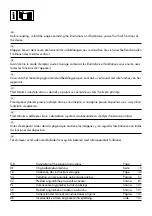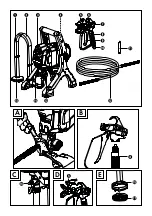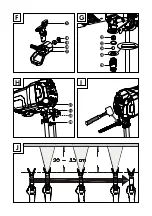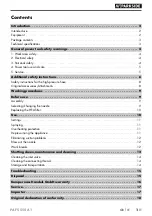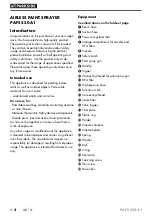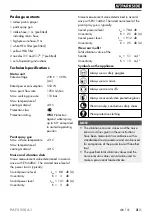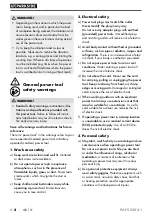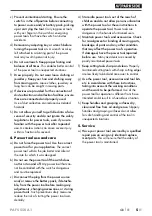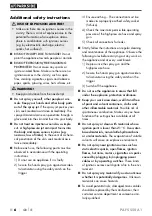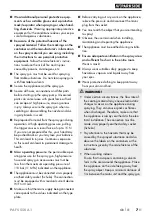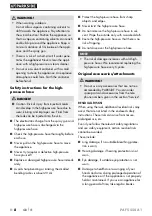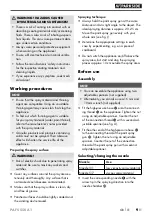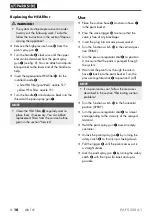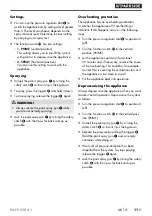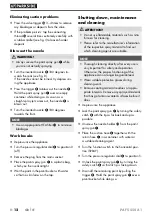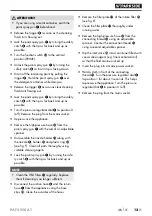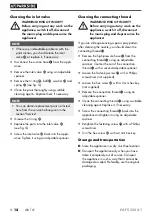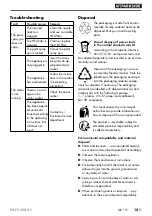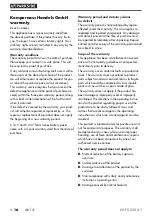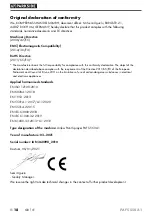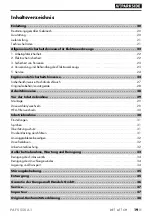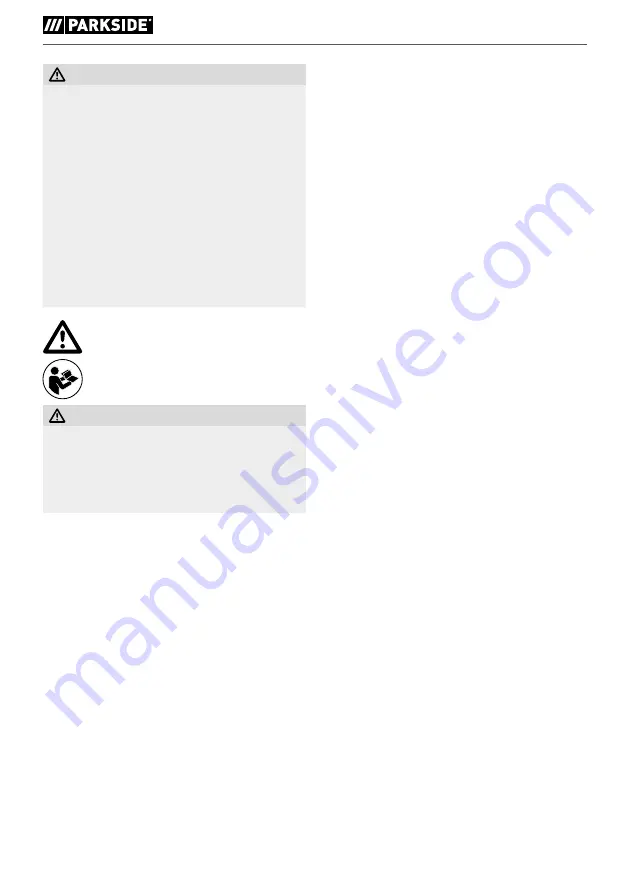
PAFS 550 A1
■
4
│
GB
│
IE
WARNING!
►
Depending on the manner in which the power
tool is being used, and in particular the kind
of workpiece being worked, the vibration and
noise emission values can deviate from the
values given in these instructions during actual
use of the power tool .
►
Try to keep the vibration load as low as
possible . Measures to reduce the vibration
load are, e .g . wearing gloves and limiting the
working time . Wherein all states of operation
must be included (e .g . times when the power
tool is switched off and times where the power
tool is switched on but running without load) .
General power tool
safety warnings
WARNING!
►
Read all safety warnings, instructions, illus-
trations and specifications provided with
this power tool.
Failure to follow all instruc-
tions listed below may result in electric shock,
fire and/or serious injury .
Save all warnings and instructions for future
reference.
The term “power tool” in the warnings refers to your
mains-operated (corded) power tool or battery-
operated (cordless) power tool .
1 . Work area safety
a)
Keep work area clean and well lit.
Cluttered
or dark areas invite accidents .
b)
Do not operate power tools in explosive
atmospheres, such as in the presence of
flammable liquids, gases or dust.
Power tools
create sparks which may ignite the dust or
fumes .
c)
Keep children and bystanders away while
operating a power tool.
Distractions can
cause you to lose control .
2 . Electrical safety
a)
Power tool plugs must match the outlet.
Never modify the plug in any way.
Do not use any adapter plugs with earthed
(grounded) power tools.
Unmodified plugs
and matching outlets will reduce risk of electric
shock .
b)
Avoid body contact with earthed or grounded
surfaces, such as pipes, radiators, ranges and
refrigerators.
There is an increased risk of elec-
tric shock if your body is earthed or grounded .
c)
Do not expose power tools to rain or wet
conditions.
Water entering a power tool will
increase the risk of electric shock .
d)
Do not abuse the cord. Never use the cord
for carrying, pulling or unplugging the power
tool. Keep cord away from heat, oil, sharp
edges or moving parts.
Damaged or entangled
cords increase the risk of electric shock .
e)
When working outdoors with an electrical
power tool always use extension cords that
are also suitable for use outdoors.
Use of a
cord suitable for outdoor use reduces the risk
of electric shock .
f)
If operating a power tool in a damp location
is unavoidable, use a residual current device
(RCD) protected supply.
Use of an RCD re-
duces the risk of electric shock .
3 . Personal safety
a)
Stay alert, watch what you are doing and use
common sense when operating a power tool.
Do not use a power tool while you are tired
or under the influence of drugs, alcohol or
medication.
A moment of inattention while
operating a power tool may result in serious
personal injury .
b)
Use personal protective equipment. Always
wear safety goggles.
Protective equipment such
as a dust mask, non-skid safety shoes, hard hat
or hearing protection used for appropriate
conditions will reduce personal injuries .
Summary of Contents for 360098 2010
Page 3: ...A B C D E...
Page 4: ...F G H I J...
Page 64: ...PAFS 550 A1 60 FR BE...
Page 84: ...PAFS 550 A1 80 NL BE...
Page 104: ...PAFS 550 A1 100 CZ...
Page 144: ...PAFS 550 A1 140 SK...


